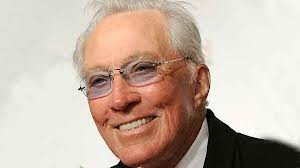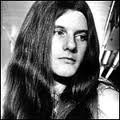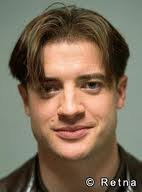Gymnastics is a type of sport that includes physical exercises requiring balance, strength, flexibility, agility, coordination, artistry and endurance. The movements involved in gymnastics contribute to the development of the arms, legs, shoulders, back, chest, and abdominal muscle groups. Gymnastics evolved from exercises used by the ancient Greeks that included skills for mounting and dismounting a horse, and from circus performance skills.
The most common form of competitive gymnastics is artistic gymnastics (AG), which consists of, for women (WAG), the events floor, vault, uneven bars, and beam; and for men (MAG), the events floor, vault, rings, pommel horse, parallel bars, and horizontal bar.
The governing body for competition in gymnastics throughout the world is the Fédération Internationale de Gymnastique (FIG). Eight sports are governed by the FIG, including gymnastics for all, men's and women's artistic gymnastics, rhythmic gymnastics, trampolining (including double mini-trampoline), tumbling, acrobatic, aerobic, and parkour.[1] Disciplines not currently recognized by FIG include wheel gymnastics, aesthetic group gymnastics, TeamGym, and Mallakhamba.
Participants in gymnastics-related sports include young children, recreational-level athletes, and competitive athletes at all levels of skill.
Etymology
The word gymnastics derives from the common Greek adjective γυμνός (gymnos), by way of the related verb γυμνάζω (gymnazo), whose meaning is to "train naked", "train in gymnastic exercise", generally "to train, to exercise".The verb had this meaning because athletes in ancient times exercised and competed without clothing.
History
Friedrich Ludwig Jahn, the "father of gymnastics"Gymnastics can be traced to exercise to ancient Greece specifically to Sparta and Athens. Exercise of that time was documented by Philostratus' work Gymnastics: The Ethics of an Athletic Aesthetic. The original term for the practice of gymnastics is from the related Greek verb γυμνάζω (gumnázō), which translates as "to train naked or nude" because young men exercising trained without clothing. In ancient Greece, physical fitness was a highly valued attribute in both men and women. It was not until after the Romans conquered Greece in 146BC that gymnastics became more formalized and used to train men in warfare. Based on Philostratus' claim that gymnastics is a form of wisdom, comparable to philosophy, poetry, music, geometry, and astronomy, Athens combined this more physical training with the education of the mind. At the Palestra, a physical education training center, the discipline of educating the body and the mind were combined allowing for a form of gymnastics that was more aesthetic and individual and that left behind the focus on strictness, discipline, the emphasis on defeating records, and a focus on strength.
Don Francisco Amorós y Ondeano, a Spanish colonel, born on February 19, 1770, in Valencia and who died on August 8, 1848, in Paris, was the first person to introduce educative gymnastics in France. The German Friedrich Ludwig Jahn began the German gymnastics movement in 1811 which led to the invention of the parallel bars, rings, high bar, the pommel horse and the vault horse.
Germans Charles Beck and Charles Follen and American John Neal brought the first wave of gymnastics to the United States in the 1820s. Beck opened the first gymnasium in the US in 1825 at the Round Hill School in Northampton, Massachusetts. Follen opened the first college gymnasium and the first public gymnasium in the US in 1826 at Harvard College and in Boston, Massachusetts, respectively. Neal was the first American to open a public gymnasium in the US in Portland, Maine in 1827. He also documented and promoted these early efforts in the American Journal of Education and The Yankee, helping to establish the American branch of the movement.
Early 20th-century gymnastics in Stockholm, Sweden
The Federation of International Gymnastics (FIG) was founded in Liege in 1881. By the end of the nineteenth century, men's gymnastics competition was popular enough to be included in the first modern Olympic Games in 1896. From then on until the early 1950s, both national and international competitions involved a changing variety of exercises gathered under the rubric, gymnastics, that included, for example, synchronized team floor calisthenics, rope climbing, high jumping, running, and horizontal ladder. During the 1920s, women organized and participated in gymnastics events. The first women's Olympic competition was limited, only involving synchronized calisthenics and track and field. These games were held in 1928 in Amsterdam. By 1954, Olympic Games apparatus and events for both men and women had been standardized in modern format, and uniform grading structures (including a point system from 1 to 15) had been agreed upon. In 1930, the first UK mass movement organisation of women in gymnastics, the Women's League of Health and Beauty, was founded by Mary Bagot Stack in London. At this time, Soviet gymnasts astounded the world with highly disciplined and difficult performances, setting a precedent that continues. Television has helped publicize and initiate a modern age of gymnastics. Both men's and women's gymnastics now attract considerable international interest, and excellent gymnasts can be found on every continent.
In 2006, a new points system for Artistic gymnastics was put into play. With an A Score (or D score) being the difficulty score, which as of 2009 is based on the top 8 high scoring elements in a routine (excluding Vault). The B Score (or E Score), is the score for execution and is given for how well the skills are performed.
If you want to read a lot more, go here: https://en.wikipedia.org/wiki/Gymnastics
Yesterday my granddaughter Sami was in a gymnastics competition. Tomorrow I will publish photos and results.
- 1 (20-ounce) can crushed pineapple in syrup, undrained
- 1 (6-serving-size) package instant vanilla pudding and pie filling
- 1 (8-ounce) container sour cream
- 1 (9-inch) prepared shortbread pie crust
- 1 (8-ounce) can sliced pineapple, drained and halved
- 8 maraschino cherries, drained
- 2 tablespoons sweetened flaked coconut
- In a large bowl, combine crushed pineapple with its syrup, dry pudding mix, and sour cream; mix until well combined. Spoon into pie crust and decorate top with pineapple slices and cherries; sprinkle with coconut.
- Cover and chill at least 2 hours, or until set, before serving.
1947 – Patricia Krenwinkel, American murderess













